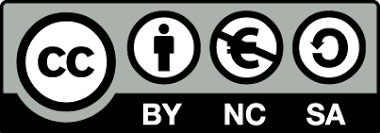Abstract
This mixed-methods research aimed to examine the current state of health
application usage and investigate the causal factors that both facilitate and hinder health
application adoption among Thai populations, with the objective of developing design
recommendations for health applications to improve healthcare access for diverse
Thai demographic groups.
Key findings:
Phase 1: Quantitative Research on Health Application Usage Patterns and Causal
Factors of Digital Health Literacy Affecting Health Application Usage Among Thai
Population
The current state of health application usage among Thai people revealed that
70.62% of Thai individuals have installed health applications, with Generation Z being the
highest users (87.7%). “Mor Prom” (Doctor Ready) emerged as the most popular
application (75.46%), primarily used for health data recording (43.58%) and treatment
eligibility verification (41.53%). The main barriers to application non-usage included lack of
knowledge in application usage (44.07%) and time constraints (36.85%). The most
compelling health application features that drive usage were convenient accessibility
(39.65%) and ease of use (34.14%).
Regarding causal factors influencing health application usage, digital health literacy
demonstrated the strongest direct influence on usage behavior (influence coefficient = 0.63),
while social factors and application expectations showed equal direct influence (influence
coefficient = 0.16).
Phase 2: Qualitative Research to Understand Health Application Usage Experiences
and Facilitator and Barrier Factors Among Thai Users
Thai people utilize health applications based on five core beliefs: (1) belief in
application benefits, (2) belief that it represents a necessary responsibility, (3) belief in its
necessity and responsiveness to needs, (4) belief in rapid response provision, and (5) usage
based on confidence in government development. The perceived value and importance
of health application usage encompassed three aspects: (1) applications that establish
user credibility, (2) applications that simplify life, enhance convenience, and save time,
and (3) applications that provide peace of mind through constant availability.
Facilitator factors included seven elements: (1) diverse accessibility channels, (2) data
security management systems, (3) reliable information, (4) centralized health application
hub, (5) comprehensive application promotion, (6) designation as essential applications for
universal adoption, and (7) impressive application design. Barrier factors comprised seven
elements: (1) perceived lack of necessity, (2) lack of awareness or familiarity,
(3) fragmentation and lack of integration, (4) security concerns, (5) user-unfriendly design,
(6) availability of superior alternatives, and (7) device limitations.
Phase 3: Design Recommendations for Health Applications to Enhance Healthcare
Access for Diverse Thai Demographic Groups
The development framework for health applications to improve healthcare access
for diverse Thai populations comprises four dimensions and eight strategies,
(1) User Interface Design Dimension addressing user needs, encompassing userresponsive application design and user-friendly application design; (2) Secure and
Connected System Development Dimension, incorporating secure systems with privacy protection,
integration with central health systems, and establishment of trustworthy and memorable
identity; (3) Accurate and Comprehensible Information Presentation Dimension, featuring
evidence-based medical content design; and (4) Context-Appropriate Mechanism Creation
Dimension, including motivational system design and user engagement promotion.
The sustainable health application development process consists of five stages.
Stage 1 involves user-centered development based on comprehensive
needs understanding; Stage 2 encompasses testing with diverse target groups covering all
age ranges and technology familiarity levels; Stage 3 focuses on integration with existing
health systems through secure linkage with national health databases; Stage 4 addresses
launch planning and promotion using digital strategies through influencers and social
media; and Stage 5 implements continuous evaluation and development through
feedback incorporation and clear long-term development planning.
Policy Recommendations
In summary, the policy recommendations for sustainable health application
development include: First, establishing a centralized health application hub to reduce
fragmentation and create standardization; Second, developing digital health literacy skills,
particularly targeting Generation X and Baby Boomer populations; Third, establishing data
security standards to build usage confidence; and Finally, promoting user-friendly
application development through design principles that ensure accessibility across all age groups.
The findings from this study will contribute to enhancing the quality of health
applications in Thailand and effectively promote healthcare access through digital channels.


